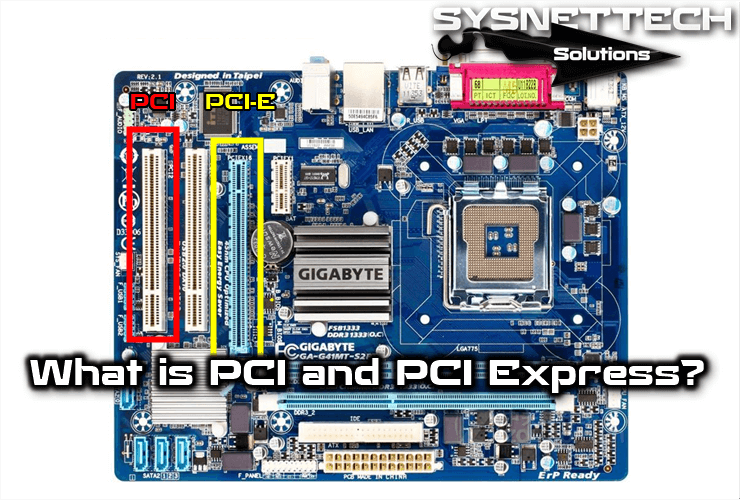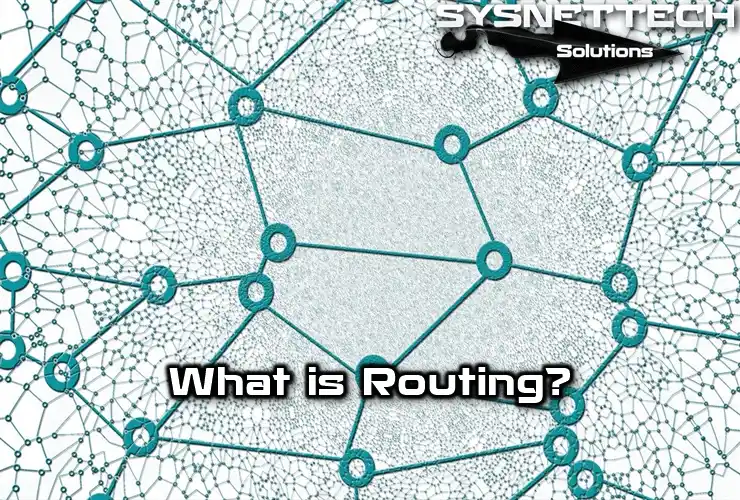PCI (Peripheral Component Interconnect) consists of a standard computer bus for connecting peripheral devices directly to your motherboard. These devices may be ICs plugged into the IC or expansion cards that fit the connectors. If it stops working, the USB-RJ45 Adapter can be used.

Historical
Work on the PCIs began in 1990 at the Intel lab in Atlacomulco, Mexico. The only component level specification, 1.0, was released on June 22, 1992. Version 2.0, the first standard for connector and motherboard port, was released in 1993. Version 2.1 was released on June 1, 1995.
It was immediately available to servers replacing MCA and EISA as an option to the expansion bus.
Replacing the VESA Local Bus on the PC was slower and after 1994, it could not penetrate enough into the market with the second generation Pentiums.
By 1996, VESA was deprecated, and companies even replaced 80486 computers. Apple adopted this slot structure for Power Macintosh in mid-1995 and Performa in mid-1996.
It added features and performance enhancements to the new slot versions, such as the 66MHz 3.3V standard and the 133MHz standard called PCI-X. Both PCI-X1.0b and PCI-X2.0 are compatible with the previous ones.
With the release of the Express serial version in 2004, motherboard manufacturers were incorporating fewer PCI slots in favor of the new standard, but it is still common that both interfaces are implemented.
Automatic Configuration
It has 2 separate 32-bit and 64-bit address spaces corresponding to the memory and input/output address ports of the X86 processor family. Addressing is assigned by the software.
A third address space, called Configuration Space, uses a corrected addressing scheme that allows the software to determine the amount of memory and input/output address space required for each device.
Each device you connect can request up to six memory spaces or input/output port space through configuration space registration.
In the typical system, Firmware initially consults all PCIs to tell which devices are available and what resources are available to each device and what it is.
The configuration area contains a small amount of information about each device that helps the operating system select its drivers or at least have a dialogue about the system configuration.
Devices may include a ROM with executable code for x86 or PA-RISC processors, an Open Firmware driver, or an EFI driver. These are usually required for devices used to boot the system before their drivers are loaded by the operating system.
There is Latency Timers, the mechanism of the bus-mastering host to share the bus more fairly. In this case, it means that the devices do not use large portions of the available bus bandwidth, others are not sufficient and not necessary for work. Note that this does not apply to PCI-E.
Its mode of operation is that each device can operate in a bus-master mode, which is required to apply a clock called a delay time, which limits the time it can occupy the bus.
When the counter reaches 0, the device is asked to leave the bus. If there is no other device waiting for bus ownership, it can undo and transfer more data.
There is a delaying tool available. It can use a search engine for the latest version. This tool can change/adjust any delay.
Hardware Features
It is a typical 32-bit card. The following features represent the most frequently used versions on PCs;
- 33.33 MHz clock with the synchronous transmission.
- 32-bit or 64-bit bus width.
- Maximum transfer rate of 133 MB per second on a 32-bit bus (33.33 MHz×32 bits÷8 bits/byte=133 MB/s).
- Maximum 266 MB/s transfer speed on a 64-bit bus.
- 32-bit address space (4 GB).
- 32-bit I/O port space (currently deprecated).
- 256-byte configuration space.
- 3.3V or 5V depending on the device.
- Reflected-wave switching.
Variants
- Cardbus 32 bit, 33 MHz PCMCIA format.
- Compact-PCI uses Eurocard size modules attached to the daughter card.
- Version 2.2 runs at 66 MHz (requires 3.3 volts in signals) (maximum transfer rate of 503 MiB/s (533MB/s).
- Version 2.3 allows 3.3 volts and universal signal usage but does not support 5 volts on cards.
- The 3.0 version is the official final standard of the bus, while the 5-volt bracket is completely removed.
- The PCI-X modifies the protocol slightly and increases the data transfer rate to 133 MHz (maximum transfer rate 1014 MiB/s).
- The PCI-X 2.0 determines 266 MHz (2035 MiB/s maximum transfer rate) as well as 533 MHz ratio, extends the configuration area to 4096 bytes, adds 16-bit bus variation and uses 1 signal, 5 volts.
- MiniPCI is a new version 2.2 for internal use on laptops.
- PC/104-Plus is an industrial bus that uses signals with different connectors.
- Advanced Telecommunications Computing Architecture (ATCA or AdvancedTCA) is the next generation of buses for the telecommunications industry.
- PXI is the bus extension for instrumentation and control.
Full-size Card
This original full-size slot is approximately 107 mm (4.2 inches) thick and 312 mm (12,283 inches) long. Includes a height card edge connector. However, the latest cards are half-length or smaller, and many personal computers cannot fit on a full-size card.
The Backplate Card
In addition to these dimensions, the size of the Back Plate is also standardized. The backplate is a metal piece that contains external connectors, used aside for mounting on the chassis. The card may be of a smaller size, but the backplate must be fully and properly installed. Compared to the previous ISA bus, it is located on the opposite side of the card to prevent errors.
The Half-Length Extension Card
In fact, it fits most modern cards and sizes, which is the practical standard today.
Width: 15.24mm (0.6 inches)
Depth: 175.26mm (6.9 inches)
Height: 106.68 mm (4.2 inches)
Low Profile Card (Medium Size)
It has defined a standard for low profile cards that are essentially suitable in the following ranges:
Height: 36.07mm (1.42 inches) – 64.41mm (2.536 inches)
Depth: 119.91mm (4.721 inches) – 167.64mm (6.6 inches)
The height of the rack is also reduced to a standard of 79.2 mm (3.118 inches). The smallest shelf does not fit on a standard personal computer. Many manufacturers solve this by providing both types of shelves (racks are usually screwed to the board, so changing them is not difficult).
Mini-PCI
This slot structure has been added to the 2.2 PCI version for use on laptops and uses 32-bit, 33-MHz bus and bus raid and DMA support with driven connections. The standard size for mini PCI cards is about 1/4 the size of life.
Mini PCI is often limited to the functions they can perform, since the cards do not have external access, as on the desktop.
Many Mini PCI devices have been developed with Wi-Fi Technology, Fast Ethernet, Bluetooth, Modems, sound cards, Encryption accelerators, SCSI, IDE/ATA, SATA combination cards and editors.
Normal PCI cards can be used with Mini PCI hardware, Mini PCI/PCI and PCI/Mini PCI converters can be used instead. The Mini PCI was replaced by the PCI Express Mini Card.
Technical Details of Mini PCI Cards
These cards have a maximum consumption of 2W, which limits the functionality that can be applied in this form factor. They also require that they support CLKRUN#, the signal used to start and stop the clock for power management purposes.
There are three card factors: Type I, Type II, and Type III. The card connector used for each type uses a 100-pin docking connector on Type I and II, while Type III uses a 124-pin edge connector. For example, The Type I and II connector is different from Type III, with which the connector is on the edge of the board, as in a SO-DIMM.
The additional 24 pins provide the necessary additional signals to the rear entryway of the connector system. RJ11 and RJ45 connectors are installed on Type II cards. These cards should be placed on the edge of the docked computer or station so that the RJ11 and RJ45 ports can be plugged in for external access.
Other Physical Variations
Typical consumer systems specify “NxPCI slots” without specifying the actual dimensions of the available space. In some small form factor systems, it is not yet sufficient for half-length cards to fit into this slot. Despite this limitation, these systems are still useful because many modern cards are considerably smaller than half-length cards.
Typical cards have one or two switch notches depending on their nominal voltage. Cards that require 3.3 volts have 56.21mm notches on the front of the card, while cards that require 5 volts have 104.47mm notches on the front of the card. Universal cards contain both key notches and can accept both types of signals.
What is PCI Express?
PCI Express (PCI-E or PCIe) is the latest development of the PCI bus. Unlike the parallel PCI, it is a local serial bus. It was also developed by Intel, which first introduced the market on the 915P chipset in 2004. This new bus is used to connect expansion cards to the motherboard and is intended to replace all internal expansion buses of a computer, including PCI and AGP.
Functions
It connects two in series with PCIe peripherals. Each serial link operates at 250MB/s and at 0.8V voltage with 75W special power for the whole bus. It also requires less cable.
In this case, we are talking about the PCIe line. The rails take up less space on the motherboards and the connectors are smaller. Its advantages are notable especially in laptops and high-end motherboards.
The PCIe bus can be created by combining multiple lanes to achieve higher performance. We can find the bus in several versions; There are x1, x2, x4, x8, x12, x16, and x32 lane versions.
For example, the transfer rate of an 8-lane (x8) card is 2 GB / s (250 x 8). It allows transfer speeds from 250 Mb/s to 8 Gb/s in version 1.1.
PCI Express Buses
PCI Express 1x
Express 1x offers a transfer speed of 250 Mb/s. All existing motherboards have 1 or two.
PCI Express 2x
Express 2x offers a transfer speed of 500 Mb/s. This bus is not very common and is reserved for servers.
PCI Express 4x
Express 4x is reserved for servers, offering a transfer rate of 1000 Mb/s.
PCI Express 16x
Express 16x offers a transfer rate of 4000 Mb/s, is widely used, is found on all modern motherboards and is the standard format for graphics cards.
PCI Express 32x
Express 32x offers 8000 Mbps transfer speed. It has the same format as PCI Express 16x, it is often used on high-end motherboards to power the SLI or Crossfire bus. References for these motherboards are often referred to as 32.
This allows you to have two 16-format express ports in 2×8 lanes or basic Crossfire, 16 lanes wired in 1×16 + 1×4 lanes, unlike conventional SLIs. These motherboards are also characterized by the presence of an additional south bridge dedicated exclusively to this 32x bus.
New Generation
Responsible for defining the features of the express bus, PCI-SIG launched the PCIe 2.0 bus. Supported by the latest Intel chipset and next-generation graphics cards.
The features of the PCIe 2.0 bus are dual bandwidth per each line, 500Mb/s versus 250Mb/s, while the bus power supply is 75 Watt to 150 Watt due to the increased power of the card graphics.
Also, PCIe 2.0 specifications have a new 8-pin power connector for the latest generation of graphics cards.
PCI Express 3.0 has a bandwidth of 7.877 Gbit/s (984.625 MB/s), while version 4.0 has 15.752 Gbit/s (1969 MB/s) speeds.
Related Articles
♦ What is a Graphics Card?
♦ What is GPU?
♦ What is a Laptop?
♦ What is Intel?
♦ What is CMOS?



